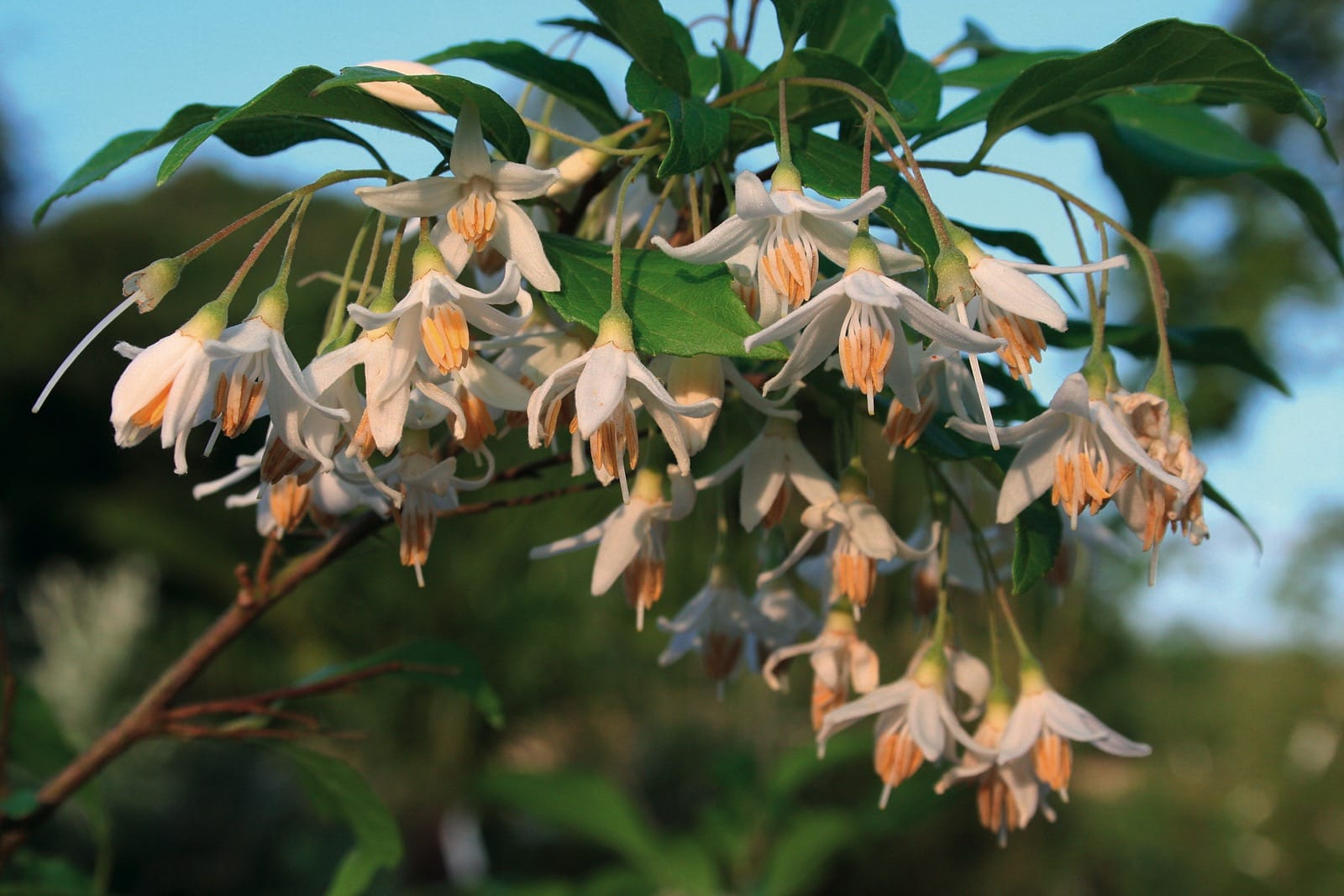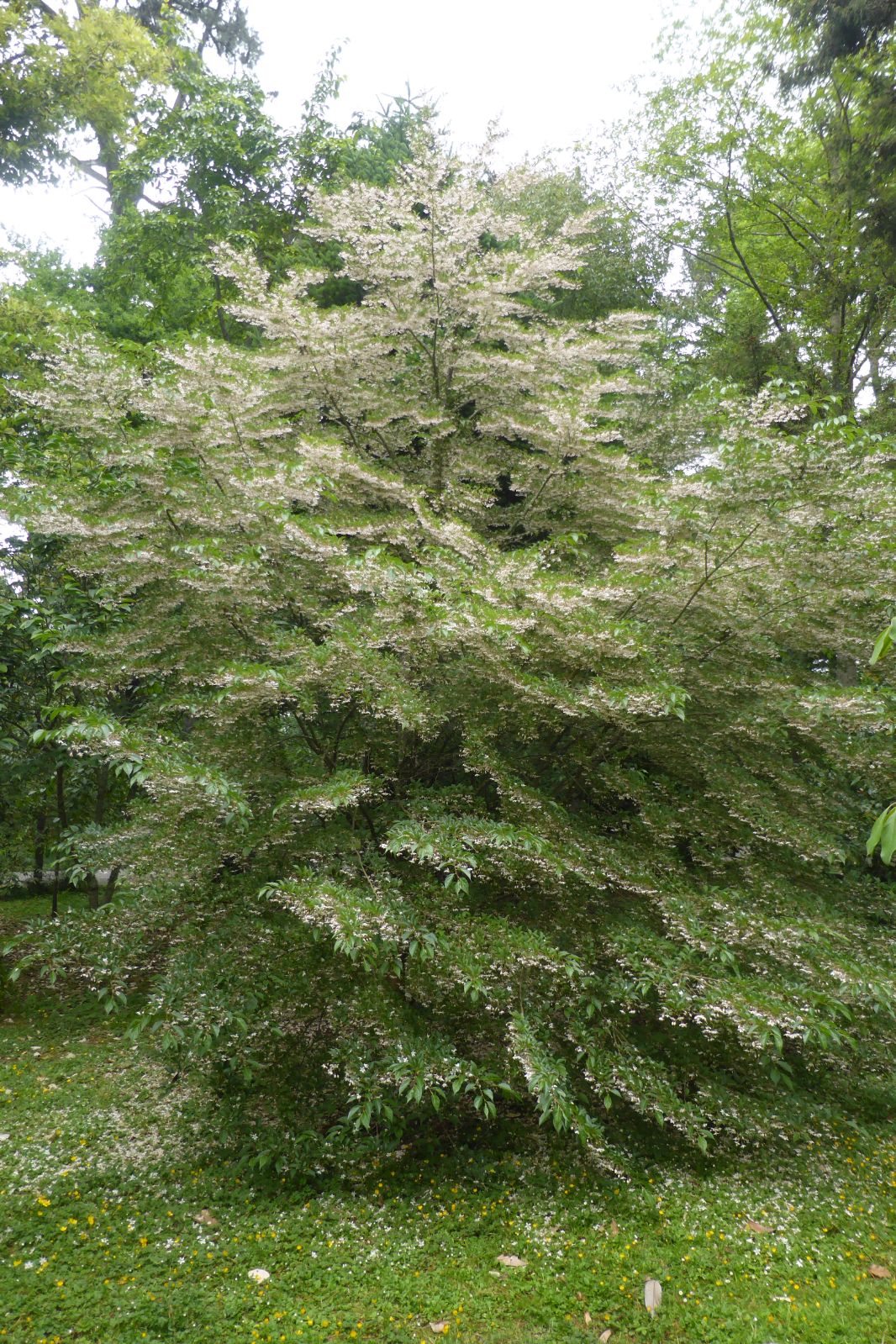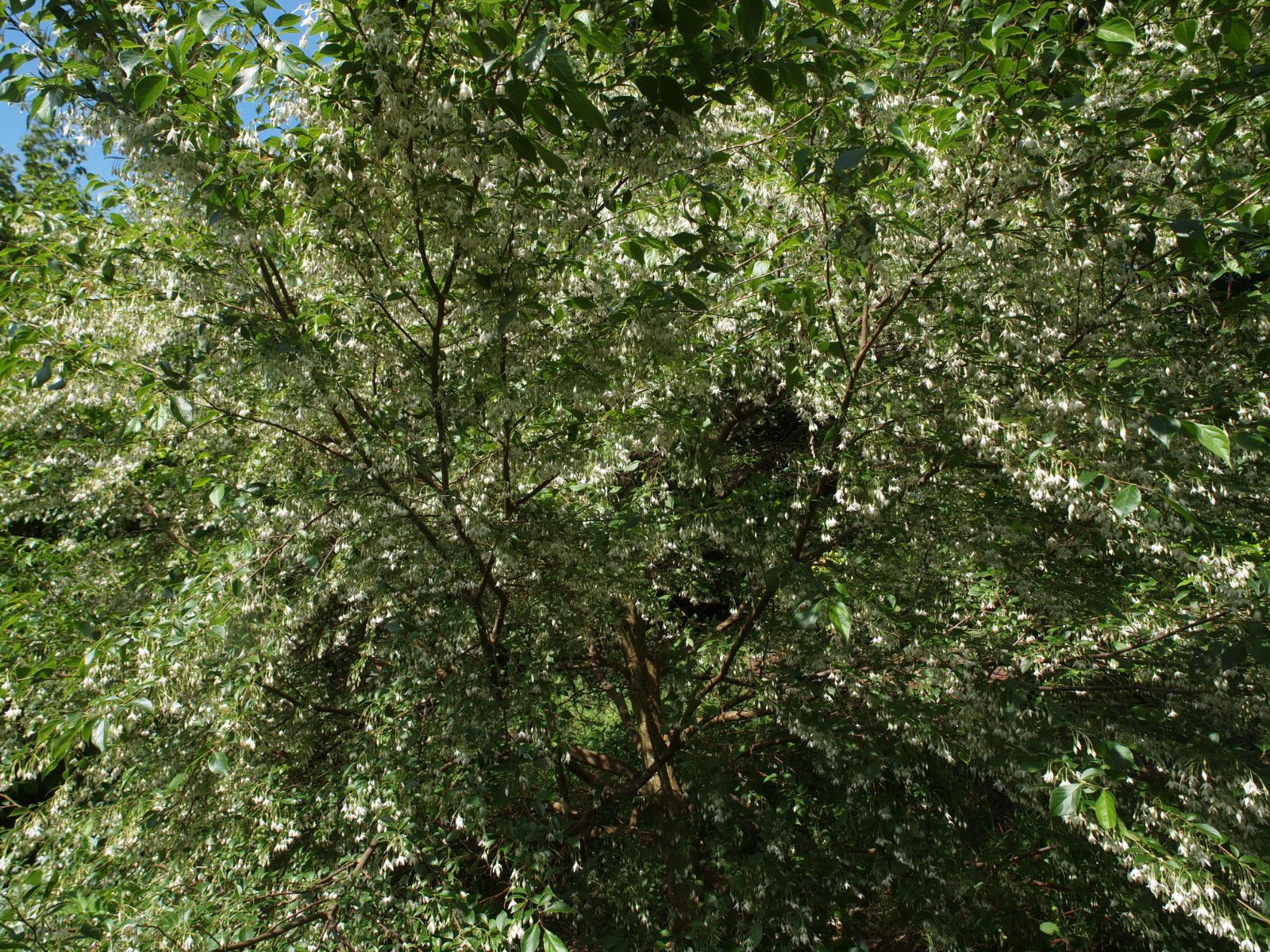Styrax formosanus
Sponsor
Kindly sponsored by
Arabella Lennox-Boyd
Credits
John Grimshaw & Ross Bayton (2018)
Recommended citation
Grimshaw, J. & Bayton, R. (2018), 'Styrax formosanus' from the website Trees and Shrubs Online (treesandshrubsonline.
Genus
Other taxa in genus
- Styrax americanus
- Styrax calvescens
- Styrax confusus
- Styrax dasyanthus
- Styrax faberi
- Styrax grandifolius
- Styrax hemsleyanus
- Styrax hookeri
- Styrax japonicus
- Styrax limprichtii
- Styrax obassia
- Styrax odoratissimus
- Styrax officinalis
- Styrax platanifolius
- Styrax redivivus
- Styrax serrulatus
- Styrax shiraianus
- Styrax suberifolius
- Styrax tonkinensis
- Styrax wilsonii
- Styrax wuyuanensis
Shrub 2–3 m, or larger tree to at least 9 m. Branchlets densely brown-tomentose. Leaves deciduous, papery, 2–5(–7) × 1.5–2.5 cm, elliptic to rhomboid, both surfaces sparsely covered with brown stellate tomentum, three to five secondary veins on each side of the midrib, margins coarsely serrate towards the apex, rarely two- to four-lobed, apex caudate to acuminate; petiole 0.3–0.4 cm long, sparsely tomentose. Inflorescences terminal, racemose, 2.5–4.5 cm long, with three to five flowers; pedicels 0.8–1.2 cm long. Flowers 1.2–1.5 cm long, slightly pendulous; calyx obscurely five-toothed, densely grey-tomentose, corolla tube 0.2–0.3 cm, lobes five to six, 0.8–1.1 cm, lanceolate to oblong, membranous, stamens (9–)10(–11), shorter than corolla. Fruit ovoid, ~0.6 cm long, rugose. Flowering April to May, fruiting May to June (Taiwan). (Hwang & Grimes 1996).
Distribution Taiwan
Habitat Forest thickets, between 500 and 1300 m asl.
USDA Hardiness Zone 8-9
Conservation status Not evaluated (NE)
Taxonomic note Styrax formosanus is closely related to S. japonicus, but differs in having imbricate corolla lobes in bud (valvate in S. japonicus). In addition to typical var. formosanus there is also var. hirtus S.M. Hwang, with dense stellate pubescence on petioles and pedicels.
Although Styrax formosanus is described by Flora of China as a shrub, plants in cultivation under this name are indubitable single-stemmed trees. A specimen planted at Tregrehan in 1998 was 5 m tall in 2007 (Johnson 2007) and producing wide-spreading branches. Unlike some species it is proportionate in its leaf-to-flower ratio, producing masses of flowers, with a good jasmine scent that wafts about (T. Hudson pers. comms. 2005, 2007). The white flowers contrast well with the very dark green of the leaves. The brown hairs are conspicuous, especially on new growth. Although said by Flora of China to occur over a wide area of southern China, it is considered by Huang et al. (2003) to be endemic to Taiwan, and all the material traced in cultivation seems to come from there. An early collection was apparently that made by Tony Kirkham and Mark Flanagan under the number ETOT 121, in 1992. This was gathered from 9 m tall trees at 1900 m on Taipingshan, growing in company with Chamaecyparis formosensis and Alnus formosana in remnant forest on humus-rich soil. It was in commerce by the late 1990s, and further gatherings in northern Taiwan by Sue and Bleddyn Wynn-Jones (BSWJ 6786, 6797) have widened its availability. The same collectors have also introduced material from Taipingshan (BSWJ 6823), as S. formosanus var. hayataianus. This varietal name is attached by Flora of China to S. suberifolius, which should have densely stellate-tomentose leaf undersides and a single locule in the ovary (compared to S. formosanus in which the stellate hairs are much sparser and the ovary is three-locular). The parent plant of BSWJ 6823 was silvery-pubescent on the undersides of the leaves, but this feature has still to appear on the as-yet unflowered plants of this gathering (B. Wynn-Jones pers. comm. 2008), so to date its identity remains unconfirmed. A 5 m plant labelled S. cf. formosanus grows in the collection of Mike and Carola Hudson at Gwavas Station, Hawkes Bay, New Zealand. In late November 2017 it was completely covered with flowers, from the lowest branches to the very top, and the whole tree was alive with bees (T. Christian pers. comm. 2018).



